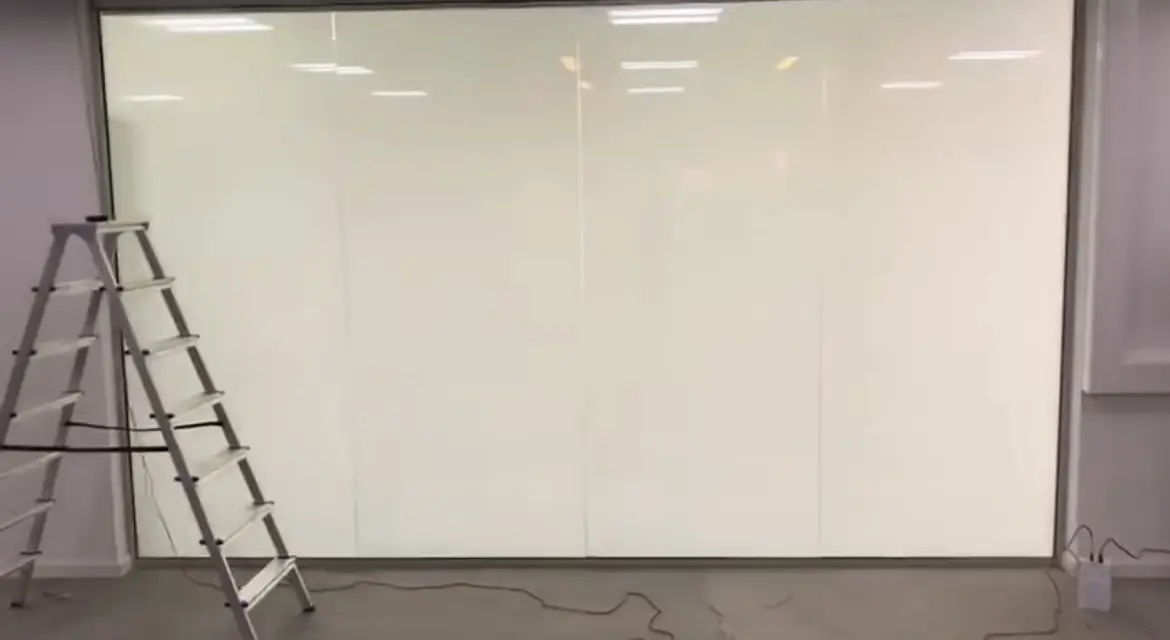How Does Halo Smart Film Work?
Halo Smart Film, also known as switchable film, is transforming the way we think about privacy and design in our living and working spaces. But how does it actually work? In this FAQ, we will break down the functioning of Halo Smart Film in simple, easy-to-understand steps, so you can get a handle on our technology.
What is Halo Smart Film?
Halo Smart Film is a special type of film that changes its transparency with the flick of a switch. It is used for various applications, including windows, glass partitions, and facades.
Imagine ordinary glass transforming into something extraordinary; this is exactly what Halo Smart Film does. By integrating it into existing or new glass surfaces, you can instantly control the transparency, creating Smart Glass. This means you don't need to replace your entire window or glass partition—just add Halo Smart Film, and you're ready to go.
What makes Halo Smart Film truly special is its versatility. It's frequently used in settings ranging from homes to offices, and even hospitals. The ability to switch between clear and opaque glass not only adds privacy but also contributes to aesthetic and functional design transformations.
How Does Halo Smart Film Operate?
Halo Smart Film operates using a small electrical current. When the current is on, the film becomes transparent. When the current is off, the film turns opaque, offering instant privacy.
The mechanism behind this transformation is quite fascinating. Our film is made up of liquid crystal molecules sandwiched between two layers of conductive material. When an electrical current passes through these layers, it aligns the liquid crystals, making the film transparent. Conversely, turning off the electricity disarranges the crystals, turning the film opaque.
This change can be controlled through various means: a simple wall switch, a remote control, or even through smartphone commands. Plus, integration with smart home systems gives you seamless control within your automated environment.
What Are the Key Components?
The key components of Halo Smart Film include a layer of liquid crystal molecules, which are sandwiched between two layers of conductive material. This is all contained within a protective outer film.
Each of these layers plays a crucial role. The liquid crystal layer is responsible for the change in transparency, while the conductive layers facilitate the electrical current that powers this change. The outer film serves as a protective barrier, safeguarding the internal components from damage and environmental factors.
Different Types of Halo Smart Film Applications
Halo Smart Film can be used in many different settings such as homes, offices, storefronts, commercial buildings, airports hospitals, and even retail spaces. It provides an adaptable solution for dynamic environments.
One of the most popular uses of Halo Smart Film is in residential settings, particularly in bathrooms, bedrooms and living rooms for immediate privacy without losing natural light.
In commercial spaces, the applications are even more varied. From conference rooms to storefronts, Halo Smart Film offers a sleek, modern alternative to traditional blinds and curtains. It allows companies to maintain privacy during meetings and presentations while still having the option to showcase clear glass.
Hospitals and healthcare facilities also benefit from Halo Smart Film technology. In patient rooms, it provides on-demand privacy, improving patient comfort and confidentiality without sacrificing natural light or creating a closed-off atmosphere.
Retail spaces can use Halo Smart Film to create dynamic window displays. You can switch the display from clear to opaque, depending on the time of day or type of promotion, making your storefront interactive and engaging for customers.
Why Choose Halo Smart Film Over Traditional Solutions?
Halo Smart Film offers unique benefits such as improved privacy, enhanced aesthetics, and energy efficiency. Unlike traditional blinds and curtains, it requires minimal maintenance and offers instant control.
One of the standout features of Halo Smart Film is its energy efficiency. By controlling the amount of light that enters a space, smart film helps in reducing heating and cooling costs. Additionally, Halo Smart Film block 99% of harmful UV rays, further contributing to energy savings and protection of interior furnishings.
Aesthetic flexibility is another significant advantage. With options for frosted and colored films, you can customize the look to match your interior design scheme, adding a sleek, modern touch to any space. Traditional window treatments often lack this versatility, making Halo Smart Film a superior choice for contemporary designs.
The ease of use cannot be overstated. Simply flip a switch or use a remote, and you can transition from a private to a public setting in seconds. This level of control is particularly useful in dynamic environments like offices and public buildings where flexibility is key.
Understanding Halo Smart Film: The Future of Privacy and Design
Halo Smart Film technology is an innovative solution that balances privacy and openness in both residential and commercial settings. With a simple electrical control, you can switch from clear to opaque, offering you the flexibility and control you need. Whether you're interested in its practical applications or technological marvel, Halo Smart Film is a forward-thinking choice for modern spaces.


